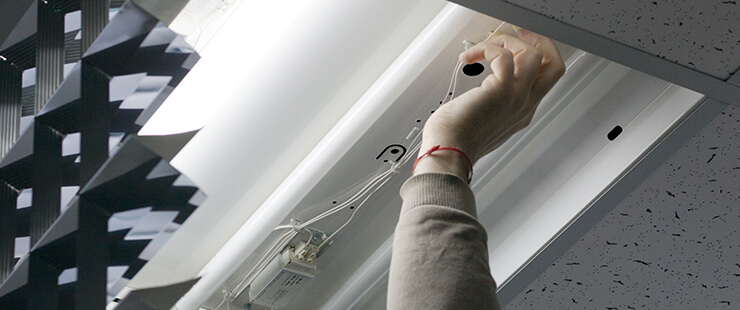Get unique, complex parts easily. No matter your requirements, Chaoyi Spring creates hard-to-produce coil springs and wire forms.
Let us help you create the custom wire form you need, from S-hooks and J-hooks to utility hooks and more.
We work closely with customers across a wide range of industries, helping them design and manufacture made-to-order parts.
Why choose Chaoyi Spring? We prioritize customer-focused collaboration, modern equipment and the latest technology to make your parts per print.
Find the information and guidance you need, from measuring a spring to learning about materials, placing an order and much more.
Imagine a slinky, that iconic spring toy. When you give it a push, you don't just see it stretch and contract; you see a wave move along its length. This


Imagine a slinky, that iconic spring toy. When you give it a push, you don't just see it stretch and contract; you see a wave move along its length. This wave, traveling through the spring, is an example of a longitudinal wave, a type of wave where the oscillations occur parallel to the direction of the wave's propagation. These longitudinal waves, often observed in springs, offer a fascinating glimpse into the world of wave mechanics. Let's delve deeper into the science behind these waves and discover how they manifest in different contexts, such as sound waves and seismic waves.

Before we delve into the intricacies of longitudinal waves on a spring, let's establish a solid understanding of what these waves are. A longitudinal wave is a type of wave where the particles of the medium oscillate parallel to the direction of the wave's propagation. Unlike transverse waves, where the oscillations are perpendicular to the direction of propagation, in longitudinal waves, the disturbances and the movement of the medium are in the same line. Think of it as a line of people holding hands and passing a pulse down the line by pushing and pulling each other. Each individual moves back and forth, but the pulse itself travels down the line.
Longitudinal waves are characterized by compressions and rarefactions. Compressions are regions where the particles are closely packed together, while rarefactions are regions where the particles are spread out. These compressions and rarefactions are what create the wave pattern. The speed of a longitudinal wave depends on the properties of the medium it's traveling through, particularly the elasticity and density of the medium.
Springs serve as an excellent tool to visualize longitudinal waves. When you give a spring a push or a pull, you create a disturbance. This disturbance propagates along the spring as a series of compressions and rarefactions. The coils of the spring bunch together in the compressions and spread out in the rarefactions. The closer the coils are, the tighter the spring is, and the greater the restoring force. This force is what drives the wave motion. You can observe the wave traveling along the spring, and if you pay close attention, you'll see that the coils themselves are moving back and forth in a direction parallel to the wave's propagation.
The speed of a longitudinal wave on a spring depends on the spring's stiffness and the mass per unit length of the spring. A stiffer spring, with a higher spring constant, will transmit the wave faster. Similarly, a denser spring will resist the wave's propagation more, resulting in a slower wave speed.
Longitudinal waves are not just confined to the realm of toy springs. They play a crucial role in various natural phenomena and technological applications. Here are a few noteworthy examples:
Longitudinal waves on a spring offer a simple yet powerful way to understand the fundamental principles of wave motion. By exploring these waves, we gain insights into how energy can be transferred through different mediums. From the sound waves that enable us to communicate to the seismic waves that shake our planet, longitudinal waves play a vital role in our world. By studying these waves, we not only expand our knowledge of physics but also gain a deeper appreciation for the intricate workings of the natural world.
So, the next time you see a slinky bouncing back and forth, remember that you're witnessing a captivating example of longitudinal wave motion. It's a simple yet fundamental phenomenon that underscores the power and elegance of physics. And as we continue to explore the world around us, we'll find that longitudinal waves, along with their transverse counterparts, play a role in shaping our understanding of the universe.
Browse some of the custom wire forms and springs that we manufacture. Don’t see what you need? We specialize in made-to-order products that meet your application requirements.
Visit Our GalleryNeed a custom wire form or coil spring? We make it work. Fill out the contact form and a representative will respond within 1 business day. If you have a PDF or CAD file, you can submit to request a quote.